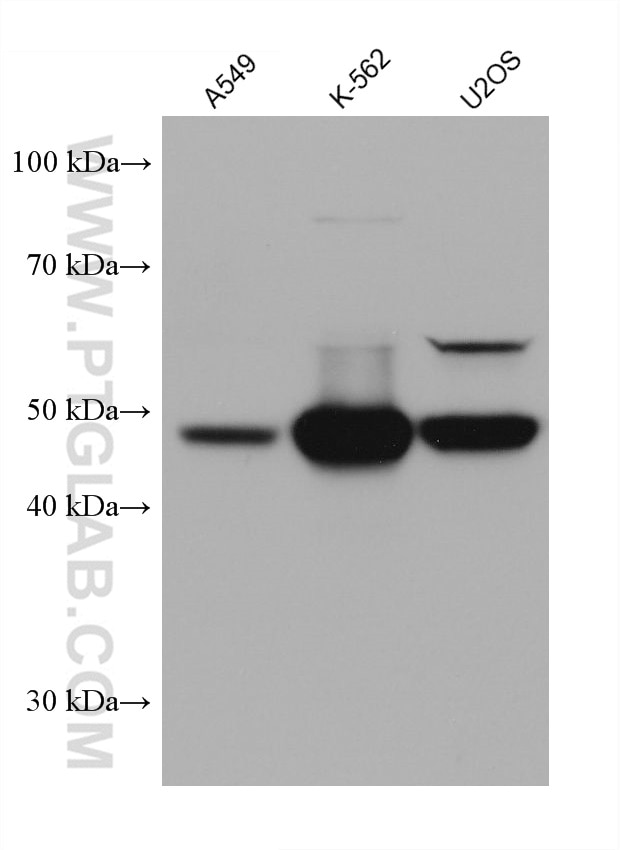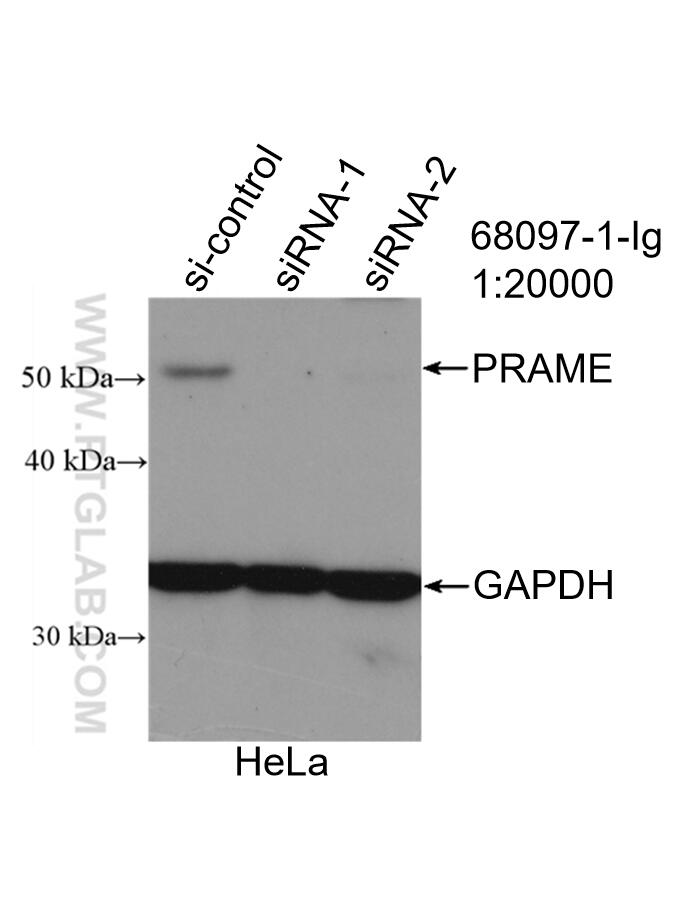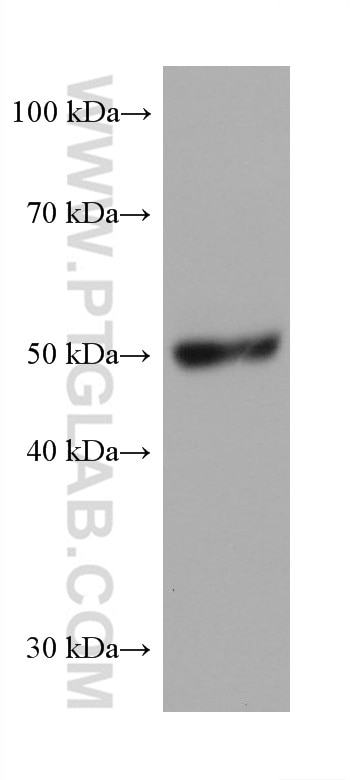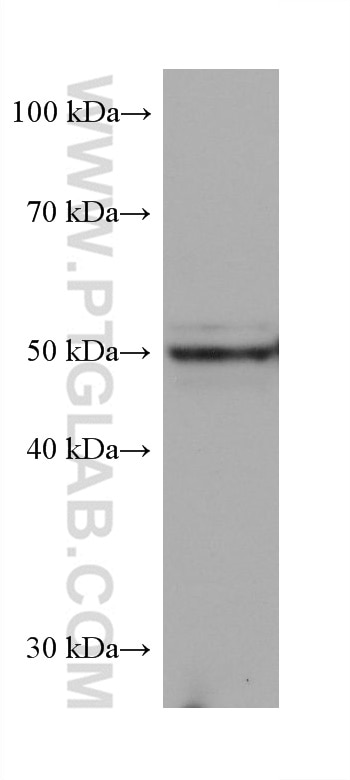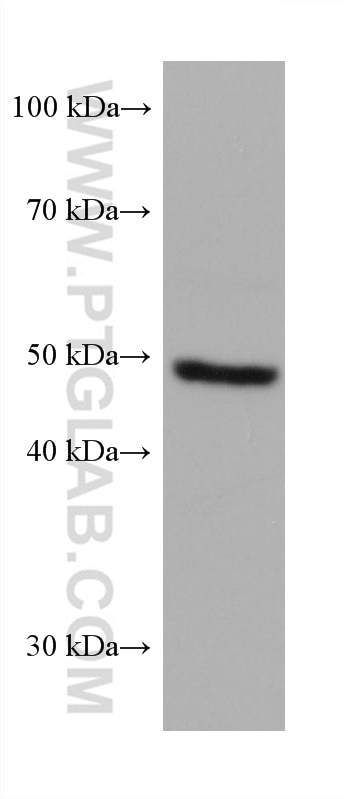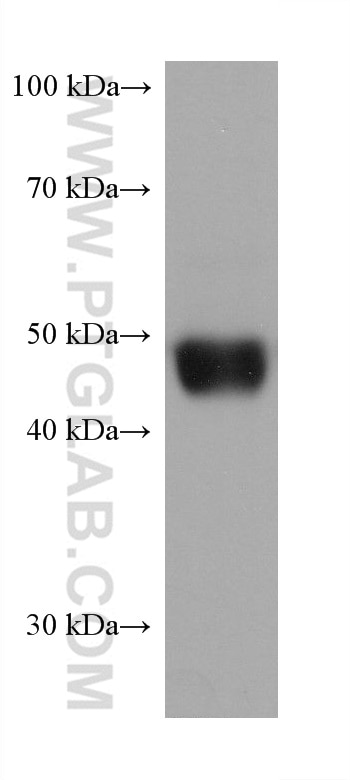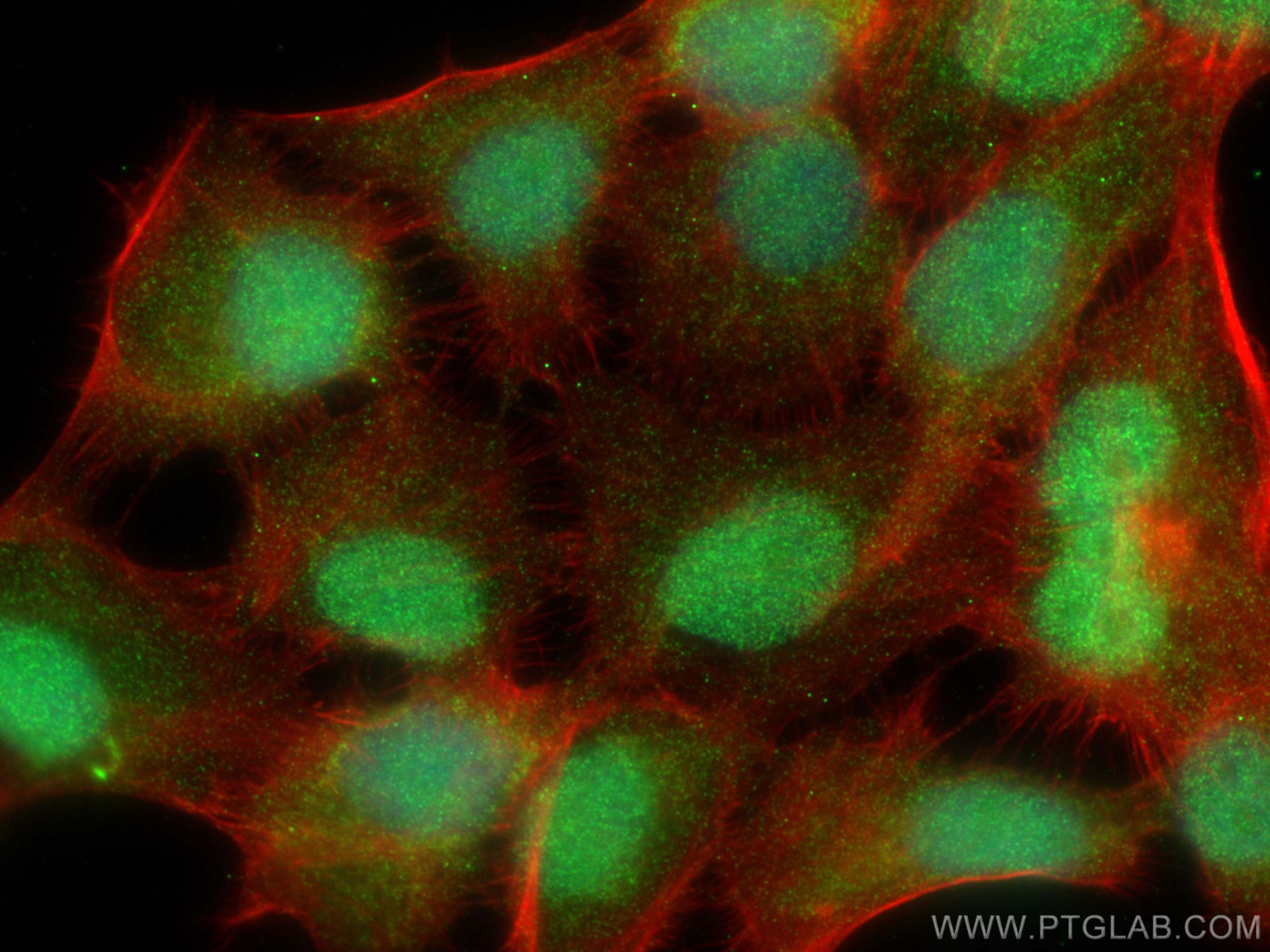- Featured Product
- KD/KO Validated
PRAME Monoklonaler Antikörper
PRAME Monoklonal Antikörper für WB, IF/ICC, Indirect ELISA
Wirt / Isotyp
Maus / IgG2b
Getestete Reaktivität
human, Maus, Ratte
Anwendung
WB, IF/ICC, Indirect ELISA
Konjugation
Unkonjugiert
CloneNo.
1E9G9
Kat-Nr. : 68097-1-PBS
Synonyme
Geprüfte Anwendungen
Produktinformation
68097-1-PBS bindet in WB, IF/ICC, Indirect ELISA PRAME und zeigt Reaktivität mit human, Maus, Ratten
| Getestete Reaktivität | human, Maus, Ratte |
| Wirt / Isotyp | Maus / IgG2b |
| Klonalität | Monoklonal |
| Typ | Antikörper |
| Immunogen | PRAME fusion protein Ag1906 |
| Vollständiger Name | preferentially expressed antigen in melanoma |
| Berechnetes Molekulargewicht | 509 aa, 58 kDa |
| Beobachtetes Molekulargewicht | 50 kDa |
| GenBank-Zugangsnummer | BC014074 |
| Gene symbol | PRAME |
| Gene ID (NCBI) | 23532 |
| Konjugation | Unkonjugiert |
| Form | Liquid |
| Reinigungsmethode | Protein-A-Reinigung |
| Lagerungspuffer | PBS only |
| Lagerungsbedingungen | Store at -80°C. 20ul Größen enthalten 0,1% BSA. |
Hintergrundinformationen
The PRAME (preferentially expressed antigen of melanoma) gene was previously shown to be overexpressed in ovarian/primary peritoneal serous carcinoma compared with malignant mesothelioma using gene expression arrays. It is considered a melanocyte differentiation antigen which is overexpressed in both solid and hematologic tumors. In normal tissue, a very low level of PRAME expression is found in normal testis, adrenals, ovary and endometrium. A high level of PRAME expression has been reported for several solid tumors, including ovarian cancer, breast cancer, lung cancer and melanomas, medulloblastoma, sarcomas, head and neck cancers, neuroblastoma, renal cancer, and Wilms'tumor. As a nuclear transcriptional repressor protein, PRAME binds to retinoic acid receptor a, thereby inhibiting retinoic acid induced differentiation, growth arrest, and apoptosis.
